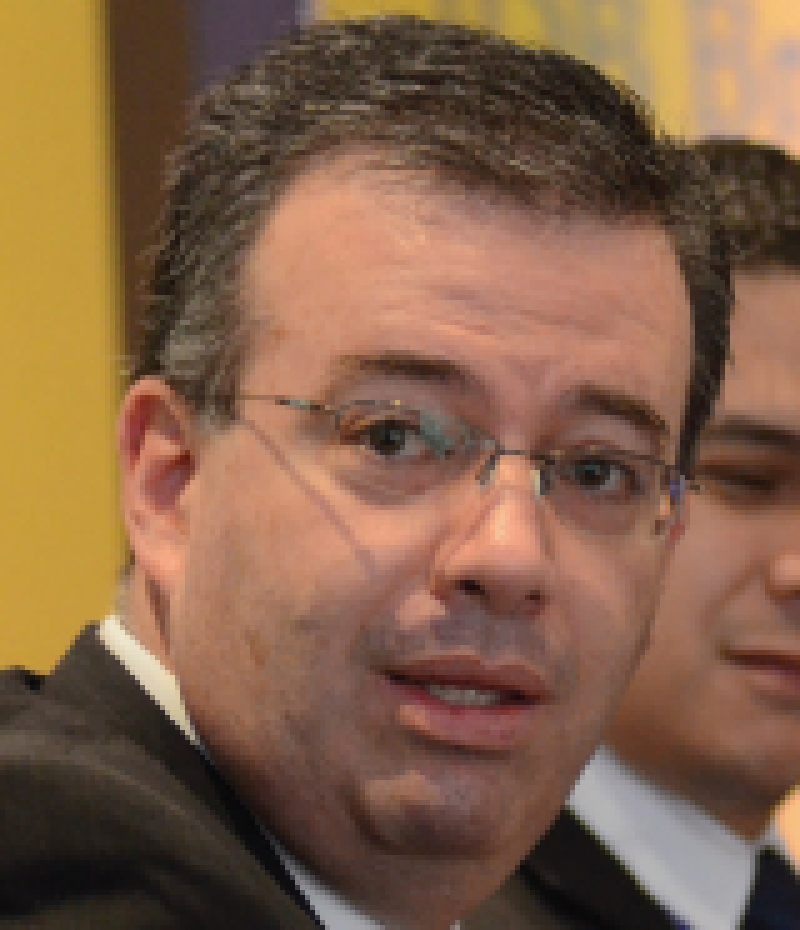Mexico has responded to Brazil’s continuing absence on the international markets and opened the year with important sovereign and quasi-sovereign transactions. Other sovereign and quasi-sovereigns have followed, but no Brazilian issuer has yet ventured into the markets, and with construction company OAS facing default on its international bonds, bankers say the risk premium levied on potential Brazilian issuers remains prohibitive.

|
We have started to see premiums become more volatile and we could see significant risk factors on the table Alejandro Diaz de Leon |
The United States of Mexico (UMS) reopened the international markets for Latin American issuers on January 12. The sovereign raised $2 billion through a new 2046 and the reopening of the 2025 transaction it sold late last year.
The deal, led by Bank of America Merrill Lynch, Credit Suisse and Morgan Stanley, was well-timed, accessing good pricing (the new issue premium was reported to be 8 basis points for the 2025 and 10bp for the 2046) following a couple of days of market volatility.
The transaction included liability management, with holders of seven different maturities swapping into the 2025 and 2046 – adding liquidity and extending the average duration of the issuer’s debt. The two key benchmarks now also reflect the sovereign’s update documentation (the pari passu clause has been omitted and collective action clauses updated).
Combined with the sovereign’s 10-year benchmark transaction in November 2014, Mexico has now funded more than half of its external funding needs for the year.
Clean sheets
“We wanted to consolidate a 30-year benchmark with the new language in the contract,” says Alejandro Diaz de Leon, Mexico’s head of public credit. “We have started to see premiums become more volatile and we could see significant risk factors on the table. Given these considerations we thought it was good to go early, and also we tend to like to do that because you have the funds with clean sheets starting the year, with money to put to work.”
The rest of Mexico’s requirements are likely to come from non-US currencies, he says – an expected theme for international DCM in 2015. “We are clearly going to try to continue with our diversification effort,” he says. “We wanted to fast-forward the dollar component [due to expectations of rising US rates later in the year] and now we have the opportunity to evaluate funding opportunities in the euro and yen markets. The trend of relatively low rates in these markets will offer attractive alternatives for us.”
Investors shrugged off the impact to Mexico of lower oil prices; Diaz de Leon says that the ministry of finance’s 100% hedging programme helped investors get comfortable.
Diaz de Leon says he coordinated with Pemex, which followed UMS to the international markets just days later. “We believe that, in terms of sequencing, it is constructive to see the lower risk issuer go first, and then the company after that,” he says. “Our data points and benchmarks can be an important piece of the information when investors evaluate Pemex securities.”
|
OAS is being advised by a local adviser Banker |
Pemex also saw liquidity issues trump concerns about falling oil, with the national oil company printing a jumbo $6 billion, triple-tranche deal that saw combined orders of $17.5 billion. Also, a lack of supply from other EM and oil and gas companies – with no recent trades out of Russia or Brazil – helped drive demand.
One banker who worked on the deal said the lack of competing supply helped add “an extra few billions that we wouldn’t otherwise have seen” but the deal would have closed with more supply.
The company sold a $1.5 billion five-year tranche, with a 3.5% coupon that was priced at 235 basis points over Treasuries (from early guidance of 260bp). A $1.5 billion 2026 tranche paid a 4.5% coupon and was priced at a spread of 280bp over Treasuries (down from 300bp over) and a $3 billion 2046 tranche paid a coupon of 5.625%, pricing at 330bp over Treasuries (from 350bp over). BBVA, Citi, HSBC and Morgan Stanley led the trade.
Other Latin American issuers followed the Mexican duo: the Dominican Republic sold a $2.5 billion, dual tranche transaction, which, led by BAML and JPMorgan, also compressed from early guidance to price well. Demand for the Dominican Republic benefited from the fall in oil prices – as the lower cost of imports should help the country improve its current account deficit of 3% last year – but even Colombia, which relies heavily on oil revenues for its public finances, was able to successfully sell a new 30-year bond, with a 5% coupon pricing to yield US Treasuries plus 262.5bp, below initial price thoughts of plus 280bp. Ecuador’s Petroamazonas has reportedly been sufficiently emboldened by January’s activity to consider an international transaction.
Mexico also looks likely to open the high-yield sector soon, with bus company Grupo Senda roadshowing with Credit Suisse and Morgan Stanley. The activity from Mexico is in stark contrast to that of Brazil, which suffered another blow when rating agencies slashed OAS’s ratings after it missed an interest payment on its $400 million 2021 bond. That announcement heightened already frayed nerves among Brazilian DCM bankers who have yet to see any sign of an end to the saga of the third quarter 2014 earnings at Petrobras. The company’s auditors are refusing sign-off and non-publication of the results will lead to a default on some of Petrobras’ outstanding bonds.
Bankers are frustrated. “OAS is being advised by a local adviser who doesn’t know what it is doing,” says one. “OAS could have asked for time for an extension and to explore asset sales – this isn’t OGX. And now we have a situation with OAS, which is one of the best companies in the sector, and that is having a real impact on investors’ perceptions of Brazil as a whole.”
